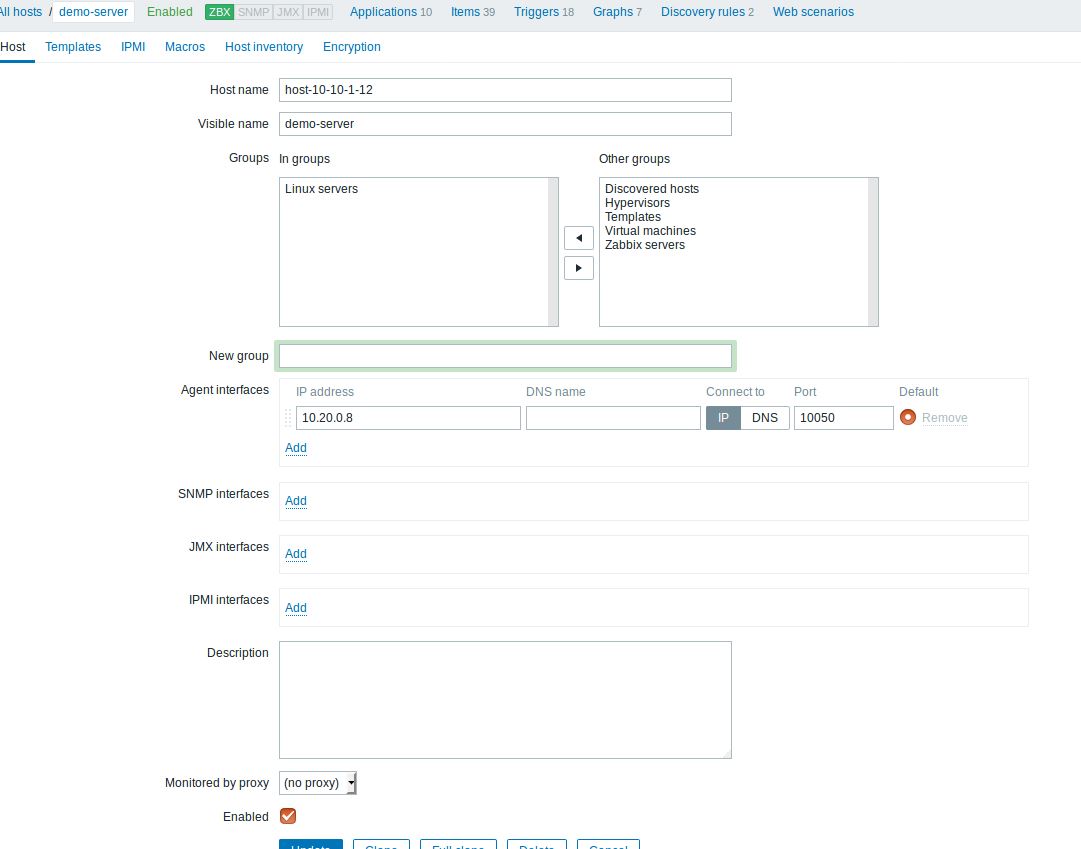Dynamic SFC Demo at OpenStack Summit 2018 Vancouver by Tacker team
1. Two libvirt VMs to install devstack and Zabbix server.
2. Two libvirt networks which can reach the internet (one management, one devstack external)
1. Chain: IDS (Suricata), Openwrt (VNFs)
2. Target to protect: Server nova instance.
1. Install devstack in a VM as it is described here (0) using the configuration sample here (1) (Please add here the right configuration for the management and external networks). Two network interfaces, one for the management and one for the external_network.
2. Create a second VM where you will install the Zabbix server according to these instructions (2). Please be sure that the Zabbix server has an interface on the same network as the external_network of devstack to be able to monitor the server nova instance through the floating IP. And, config the Zabbix server as below:
- Register the devstack machine (the host that we want to monitor and it should have installed the Zabbix agent, see step 3)
- Create a trigger with a name which contains the keyword BpS (e.g. BpS in the eth0 is too high) and add to that trigger an expression-condition which will generate an event if the traffic will set this expression-condition to True. The expression-condition is:
{host-10-10-1-12:net.if.in[eth0].avg(2)}>2000- Create an action which will update the classifier if a trigger with the BpS name will generated by the Zabbix server. To do this you need to create an action , set the keyword of the Trigger which will make this action to actually come to play and also you need to create an operation inside that action where you will write the update-vnffg command which you will execute to update the current classifier.
The action command is as follows (the tacker cli has been replaced by the openstack cli):
/usr/local/bin/openstack --os-username admin \
--os-password devstack \
--os-project-name admin \
--os-user-domain-name default \
--os-project-domain-name default \
--os-project-domain-id default \
--os-auth-url http://<devstack ip address>/identity/v3 \
--os-region-name RegionOne \
vnf graph set \
--vnffgd-template vnffg_block_icmp.yaml block_icmpThat's all if you do this you must see the event in the Zabbix server when the traffic in eth0 interface match the expression-condition in the trigger.
3. Install in the server nova instance and in the devstack VM natively the Zabbix agent (2). The Zabbix agent in the server nova instance is used to send data back to the Zabbix server. The Zabbix agent in the devstack VM is essential because we execute from the Zabbix server the vnffg-update command so we can update the classifier of the chain. And for this we need the Zabbix agent to be installed in the devstack VM.
4. Deploy two Service Functions (SFs) via two VNFs:
-
The first one is Suricata (IDS) which will be deployed using this VNFD template (7) with this image (10). After the VNF instance has been deployed successfully, SSH to it and configure as in (3).
-
The second one is OpenWrt with the configuration is the same as it is described in the Tacker docs (4). Use the VNFD template here (8) and param file here (9).
5. Create a VNFFG with a chain (IDS, Openwrt) and no classifier (5).
6. Generate ICMP traffic using PING towards the floating IP of the server nova instance and when that traffic reaches a threshold a specific event is published to the Zabbix server and Zabbix server executes the vvnffg-update action which update the already created VNFFG with a classifier which classifies the ICMP traffic (6). That means that the traffic will be steered to the SFs and it will be mitigated.
Dimitrios Markou [email protected] - Intracom Telecom
Yong Sheng Gong [email protected] - 99cloud
Trinh Nguyen [email protected] - EdLab





